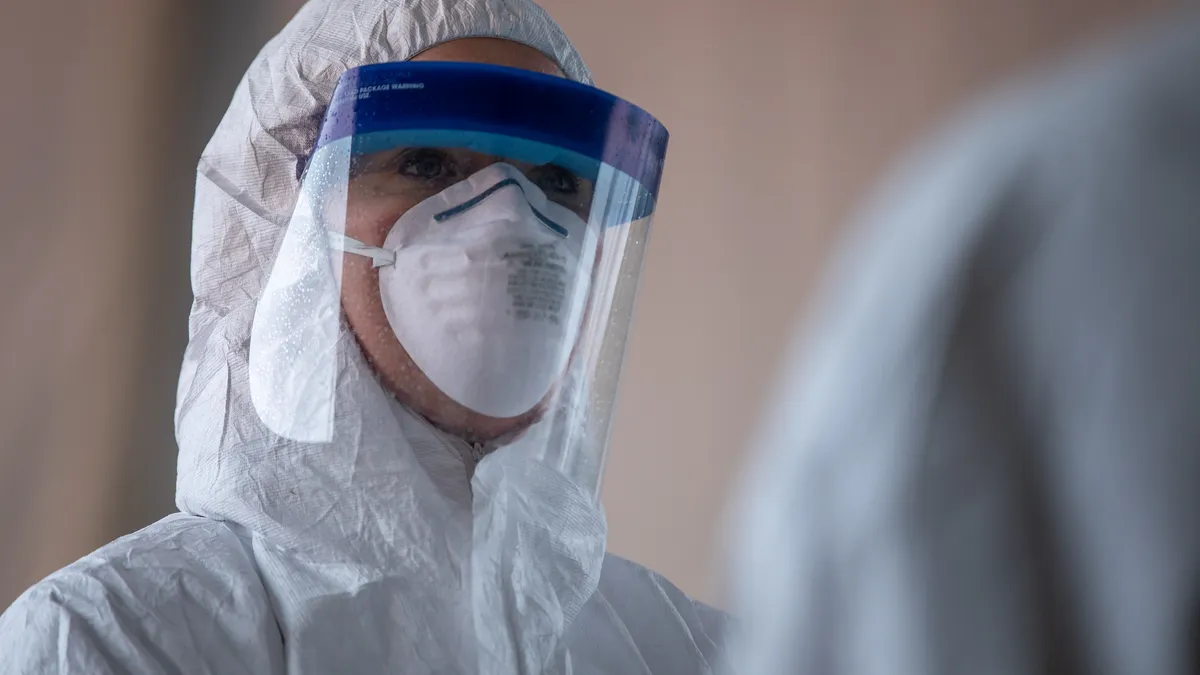Dive Brief:
- CMS on Monday announced an "unprecedented range" of temporary regulatory changes aimed at helping providers boost capacity and staff to treat patients amid the COVID-19 pandemic. The changes mean hospitals can bill for services provided outside their buildings so that patients can be screened offsite or through virtual encounters.
- As many COVID-19 patients have required ventilators, Medicare will now cover respiratory devices and equipment for any medical reason a doctor determines instead of only under specific conditions.
- Ambulatory surgery centers will be able to contract with local health systems to provide hospital services such as cancer care and necessary surgeries and bill as hospitals. Approved non-hospital spaces like dorm rooms or hotels can be used for patient care and quarantine purposes.
Dive Insight:
The sweeping waivers come as hospitals in hot spots such as New York City find themselves overwhelmed with COVID-19 cases and cities across the country race to prepare for an expected influx of patients infected with the novel coronavirus.
"They will maximize the systems' preparedness by freeing providers from regulations ill-suited to the unprecedented needs of this emergency," CMS Administrator Seema Verma said during a call with reporters Monday night.
CMS has been in contact with health systems and had a meeting with state hospital associations Friday. Providers did not push back on the changes and were "very supportive of these efforts," Verma said.
The waivers for facilities will apply to the entire healthcare system, regardless of payer, she said.
Telemedicine access is also expanded, covering more than 80 additional services for Medicare beneficiaries that will be billed at the same rate as in-person visits, including emergency care. Providers can also do audio-only evaluations, a much requested change as some people don't have access to video phones or strong internet connections. This builds on an order from about two weeks ago that first extended Medicare telehealth coverage in the wake of the coronavirus crises.
CMS also said remote patient monitoring can be used for both acute and chronic patients and those with only one disease, and for new patients.
The American Medical Association applauded the changes, particularly those concerning remote monitoring. "With physicians stretched thin in the fight against the COVID-19 pandemic, our health care workforce needs flexibility, reduced red tape, and immediate solutions to increase capacity and ensure access to care in every patient setting, including from home," AMA President Patrice Harris said in a statement.
Also, CMS said ambulances will be able to transport patients to a wider range of locations such as federally qualified health centers or ambulatory surgery centers as well as between sites of care.
While hospital capacity varies across the country, health systems in some locations are already sounding the alarm about a lack of beds and equipment needed to treat COVID-19 and protect healthcare workers from infection.
The U.S. has more than 9,000 ambulatory surgery centers, which have largely been sidelined as federal officials urged elective procedures be halted during the pandemic, that can now act as hospitals.
As many COVID-19 patients have required ventilators, Medicare will now cover respiratory-related devices and equipments for any medical reason a doctor determines instead of only under specific conditions.
Also included are a relaxing of guidelines to allow health systems to hire clinicians in the community who would otherwise be providing nonessential services. And physician assistants, nurse practitioners, respiratory therapists and others will have more ability to practice at the top of their licenses by performing services that would otherwise need physician approval, such as prescribing and ordering tests.
Physicians have long objected to giving more abilities to mid-level providers that are usually reserved for doctors, but hospitals in hard hit areas have reported not having enough staff to handle incoming patient levels. Some areas have turned to retirees and medical students to fill the gaps and temporary staffing firms report surges in demand.












